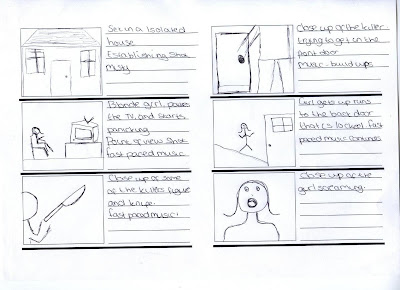1. Out of the people we asked this questionnaire to, the majority of them were aged 16-17, with 18-19 being close behind this, and younger than 16 falling into the minority. This is because horror films are classified 15 or 18 and older, hence why only a small minority of people asked were 16 and younger, watched horror films. From this we can gather that our main target audience would be 16-17 falling into 18-19. When making our trailer we should take this into consideration and classify our trailer appropriately.
2. When asking there gender, the responses came back fairly close, with only a few more people being females who said they watched horror films. This would be something we would have to take into consideration also, and tailor our trailor to something more suited to females.
3. The majority of people asked said they were students and had part time work.
4. Horror films seem to be a very popular genre within the people we asked.
5. Out of the people we asked, the majority of them said they find out about new horror films through trailers, either on the internet or television. Because of this when we have completed our trailer it may be a good idea to advertise and promote it on social networking sites that our target audience would use such as, Facebook, Twitter and YouTube.
6. More than half the people asked said that a good trailer and famous cast made them want to watch a horror film. Although we can't bring in a famous cast to be in our trailer, we can consider referencing other well known horror films, that the target audience can relate to.
7. "What do you like most about horror films?" is an open, qualitative question. We chose to do this because we wanted to know peoples opinnions rather than giving them generic answers to choose from, so we can incopriate their answers into our trailer.
8. Fear of the unknown was a majority answer for, "what component in horror films scares you the most?"
9. When asking them what their favourite horror film was we also made it an open, qualitative question, where they could write an answer, rather than restricting them to a few answers that we had given. The responses came back varied, from the "Saw" series to "The Shining".
10. The majority of responses for "where would you be most likely to watch a horror film?" was in the comfort of there own home or at a friends house.
11. This question showed that the majority of people asked are avid movie fans and go to the cinema 4-6 times a month.
12.
13. More than half the people asked said that they liked realism wwithin a horror storyline. This may be because it is easily relatable to everyday life which heightens the scare factor.
14. Majority shows that people prefer to watch horror films in 2D as appose to 3D.
15. Out of the people that were surveyed, they found the film poster for Nightmare on Elm Street was the one that scared them the most.





